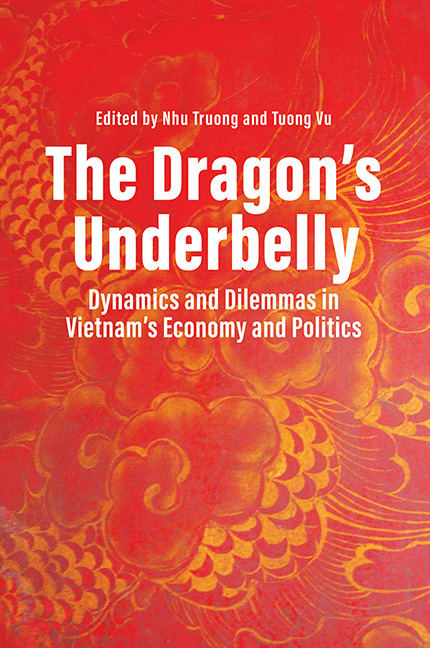Chapter 4 - Vietnam’s Participation in Global Value Chains: Achievements, Challenges and Policy Implications
Published online by Cambridge University Press: 09 January 2024
Summary
A study of UNCTAD (2013a) indicates that about eighty per cent of global trade (in terms of gross exports) is associated with the international production networks of multinational enterprises (MNEs). It means that a large number of products are produced from different locations across borders around the globe.
It is believed that developing economies embedded in low-value-added chains can improve their position in GVCs. One of the most useful ways to do this, and one which is widely applied, is by further attracting and improving the quality of inward FDI flows. FDI may create both direct and indirect effects on a country’s participation in GVCs. The direct effect is that foreign and domestic enterprises in a joint venture are likely to produce sophisticated products and deepen their participation in GVCs, while the indirect effect is that FDI can create spillover impacts (including horizontal and vertical spillovers) on the level of innovation of local firms (Javorcik 2004, 2008). After having accumulated sufficient capabilities, many of these local firms undertake outward international expansion and become MNEs. Alternatively, to enhance their position within GVCs, firms from developing economies that started off at the lowest position can use international expansion as a way to move up to a higher value-added position. The primary direction of their move depends on the governance structure of the value chain.
Thanks to the growing importance of global FDI and trade, particularly of the manufacturing sector, a large body of research on the nexus between GVCs, FDI and economic growth has concentrated on China (Yao 2009; Fu 2011; Zhu and Fu 2013; Swenson and Chen 2014; Wang and Chen 2020). Meanwhile, little attention has been paid to the GVC participation of smaller developing countries such as Vietnam. A large number of studies on Vietnam have focused on the country’s conventional trade (Tran and Heo 2009; McCaig 2011; Truong et al. 2019; Nguyen et al. 2016; Nguyen 2015; Ha and Tran 2017).
Along with the implementation of economic renovation, total commodity trade exchange between Vietnam and the rest of the world grew rapidly from only $13.6 billion in 1995 to $157 billion in 2010 and $518 billion in 2019.
- Type
- Chapter
- Information
- The Dragon's UnderbellyDynamics and Dilemmas in Vietnam's Economy and Politics, pp. 108 - 138Publisher: ISEAS–Yusof Ishak InstitutePrint publication year: 2022



